Tipping Points
As long as Earth has been shrouded in a thin layer of gas, its climate has shifted and swayed between different states in response to entirely natural cues from the sun and our orbit around the sun, from the albedo effect, in response to how thick the blanket of greenhouse gases is or whether there is dust or ash in the atmosphere which block out the sun’s rays.
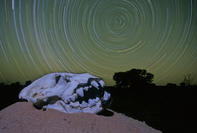
Current thinking is that sometimes when those climatic changes have happened, they haven’t always been smooth transitions. There have been times in our geological past when the climate may have lurched and toppled from one state to another.
Climate scientists talk about “tipping points”, of which there are several, that could bring about these shifts. Some even think that certain tipping points would pitch us forward into runaway global warming and irreversible change.
Tipping Point in the Arctic Ice
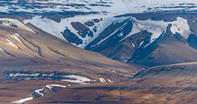
The Arctic is capped with ice all year round. It shrinks a bit in summer as its edges succumb to creeping warmth and begin to melt away, but it quickly spreads out across the sea again in winter as the sun withdraws its rays and the chill descends once more.
The very nature of the ice, being white, helps keep the Arctic in its frozen state because it reflects the sun’s energy back out to space, even in summer. But year on year, warming temperatures are causing the ice to shrink more each summer, exposing larger areas of dark ocean waters beneath which allow more of the sun’s energy to be absorbed into the Arctic system.
The less ice to reflect away heat, the less chance there is of ice developing; the more dark water to absorb heat, the more ice melts – and so the beast keeps feeding itself.
An Ice-Free Arctic
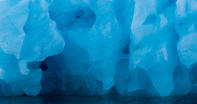
The high Arctic can expect an increase in warming within the next century that is 40 percent above the global average, something which might one day even rid the Arctic of summertime ice completely, allowing ships to begin trekking through the Northwest Passage during summer for the first time in nautical history.
In anticipation of an ice-free Arctic, national boundaries are already being tested in the area. Two Russian submarines darted down under the Arctic ice in the boreal summer of 2007, and braved a dangerous 4,300 m dive to the Lomonosov ridge to plant a Russian flag on the ocean floor in order to stake a claim on the oil and minerals down there.
The Guardian reported that the area could store 10 billion tons of hydrocarbons which will be opened up for easier exploitation once the ice melts further, should the United Nations approve Russian’s claim. Hardly surprising, the United States was not pleased about this little gesture.
Tipping Point in the Arctic Tundra
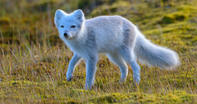
The tundra – the thin, treeless belt that divides Arctic’s ice cap from the timber forests of the Northern Hemisphere. It’s so cold here that most of its soils remain frozen all year round – only a thin top layer thaws out during the short summer months. This permafrost contains vast amounts of frozen organic soils and methane (the result of vegetation decomposing in a damp, low-oxygen environment similar to that of a wetland, only colder). But as the Arctic continues to warm up, this permafrost will melt.
New Scientist reported in 2005 that west Siberia’s peat bog alone contains “some 70 billion tonnes of methane, a quarter of all the methane stored on the land surface worldwide”. “If the bogs dry out as they warm, the methane will oxidise and escape into the air as carbon dioxide.
But if the bogs remain wet, as is the case in western Siberia today, then the methane will be released straight into the atmosphere.” Should the Arctic’s tundra begin to melt irreversibly, the resulting methane and carbon dioxide release could produce runaway global warming.
Tipping Point Deforestation
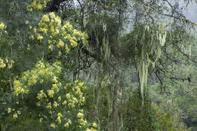
Trees absorb CO2, banking it away in their woody parts and roots, making them a critical aspect of the short-term carbon cycle. As long as a tree is alive, all the CO2 is captured during the course of its life will remain there, banked away for safekeeping. When the tree dies, and is either burned or rots, the carbon is released back into the atmosphere.
Forests, where carbon is captured on a mass scale, help balance the amount of CO2 in the atmosphere. The more trees that are cut down, the less CO2 is removed from the atmosphere. Deforestation accounts for 18.3 % of global emissions, according to the World Resources Institute, which is more than the entire transport sector emits worldwide.
Forests Sustain Themselves
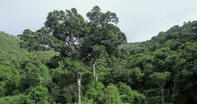
Just as the Arctic’s ice helps maintain the presence of ice by reflecting heat away, so forests help sustain themselves by creating much of their own rainfall: as trees breathe out through pores in their leaves, they lose water to the air around them.
This is called transpiration and when there are a sufficiently large number of trees all breathing out together, as in the case of the Amazon forest, the accumulated moisture gathers above the canopy and eventually condenses to form clouds.
These then rain their water back down onto the forest. Rising temperatures can disrupt this cycle. George Monbiot summarises the process well in his remarkable book Heat: as transpiration decreases due to fewer trees “there is less rainfall to sustain remaining trees, more sunlight reaches the forest floor (drying it and making the forest more susceptible to fires), and less heat is lost through evaporation. The rising temperature and decreasing rainfall kill more trees, and the chain reaction continues.”
Irreversible Decline
If the Amazon pushes past a tipping point, it would spiral it into irreversible decline. Should this happen, the Amazon has the capacity to release “730 million tonnes of carbon – about 10 percent of annual manmade emissions – a year for seventy-five years”.
Some scientists contest this understanding of how the rain forest system works as a climate feedback, but until they’ve slugged it out amongst themselves and found a point of agreement, it is still worthy of mention here.
Deforestation is happening everywhere, not just in the Amazon. Central Africa and parts of Asia are seeing similar stripping of this planetary lung as trees are razed to the ground for timber and slash-and-burn agriculture. The Food and Agricultural Organization (FAO) estimates that 13 million hectares of forests are lost annually around the globe, most of which are converted to agricultural land. The largest of these losses occurs in South America and Africa.
By Leonie Joubert